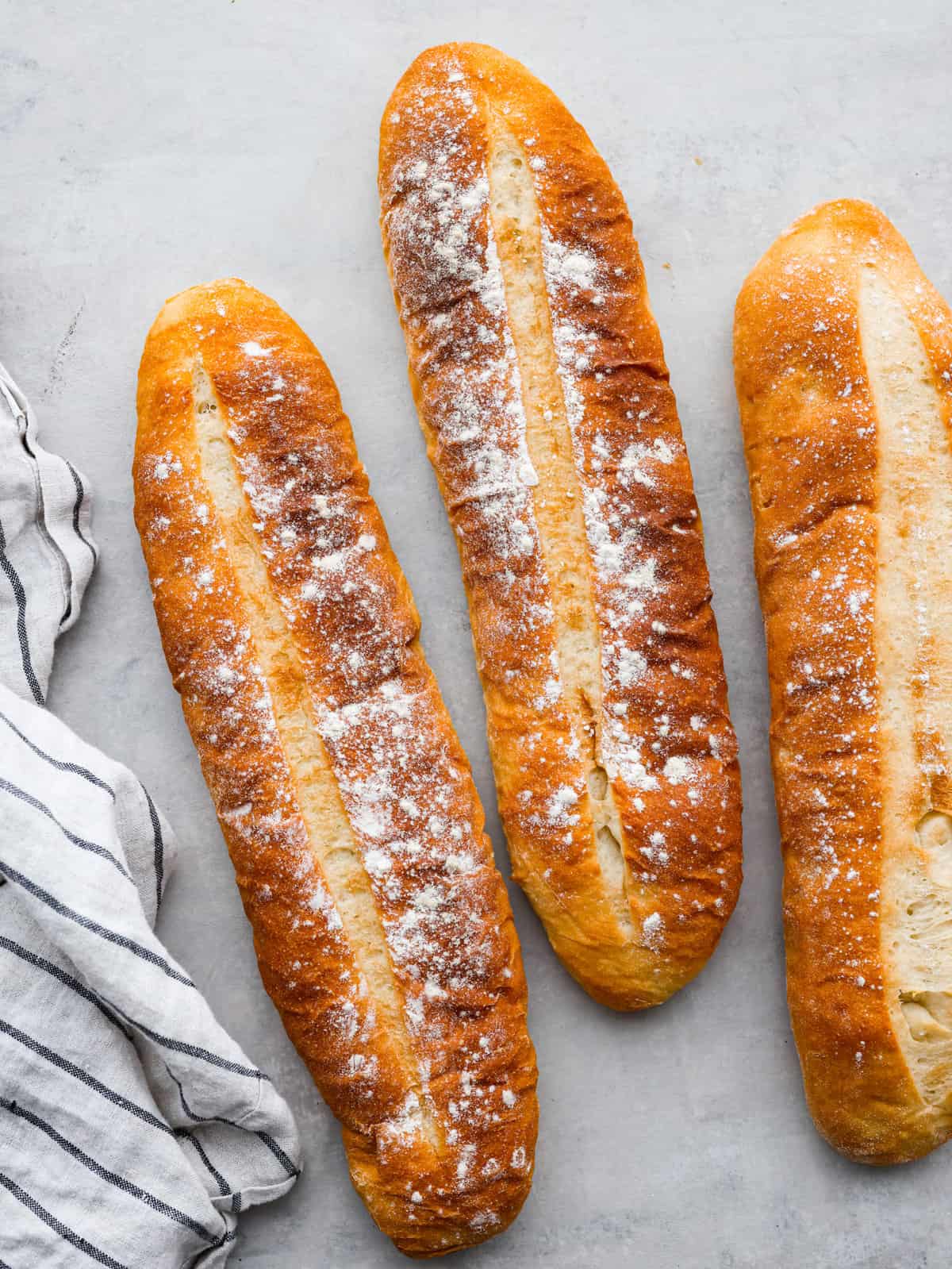
Cuban bread is a delightfully soft and fluffy bread that is shaped like a French baguette. It has a soft crust and the secret ingredient is lard which is what gives this bread great flavor and the perfect chew!
I LOVE bread! I love baking bread, I love eating bread, and I love sharing bread recipes. There are so many different kinds of breads you can make that taste totally different with almost the exact same ingredients. If you are new to bread baking, a great place to start is with this quick and easy Banana Bread. You don’t have to do any kneading or worry about yeast. Once you build up your confidence, you have to try this Buttery Beer Bread and the all time classic Sandwich Bread!
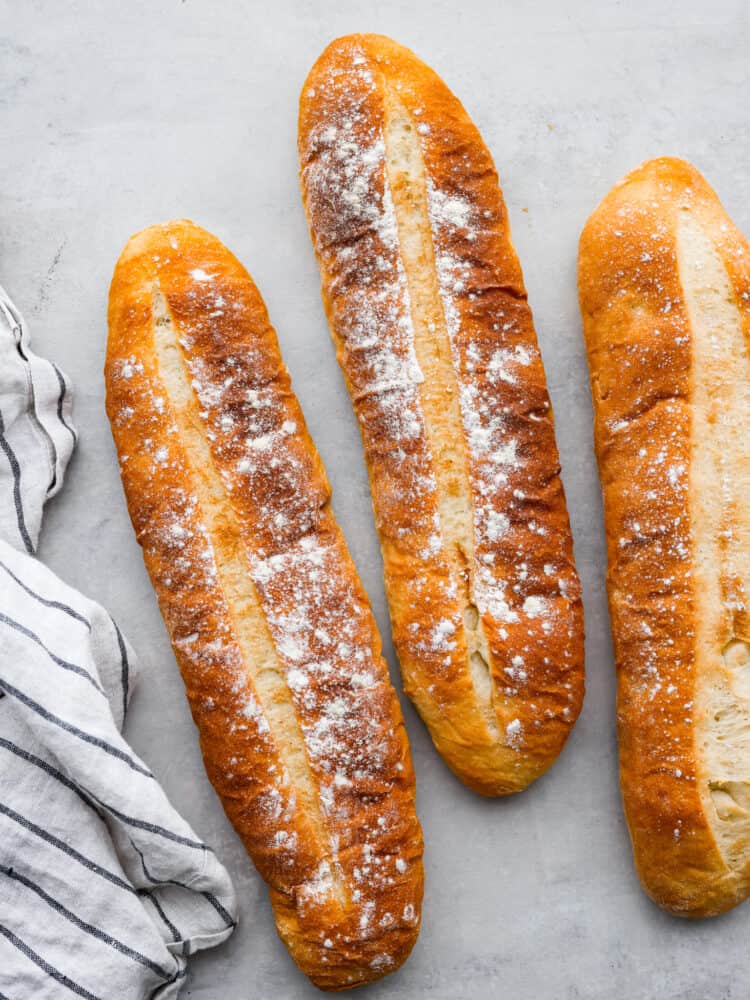
Cuban Bread Recipe
What is Cuban bread? It is actually really similar to white sandwich bread. The bread is soft, fluffy, and dense. It is shaped like a French baguette but has a soft crust. Its flavor is a little heavier because of the lard that is traditionally used in this bread. I actually wouldn’t be surprised if it became your new favorite bread because it makes the best sandwiches (like this Cuban Sandwich!).
If you have ever made sourdough bread, this recipe is similar to that process. You will need to prepare a starter the night before and add it to the bread the next day. This recipe is also great because it makes two loaves! The overnight starter is really easy to make too. All you have to do is add some water, yeast, and flour to a bowl and mix it together, then put it in the fridge. But I’m getting ahead of myself! Let’s talk about what you’ll need to make this bread.
Ingredients
You will make Cuban bread in two parts. You start with a few ingredients mixed together and then leave that in the fridge. The next day you add more ingredients to it to make your dough. I’ve listed out the ingredients you will need for making this bread. You can find the exact measurements in the recipe card below.
- Water: You will want warm water, which is about 105 to 115 degrees. It should be warm to the touch but not hot enough to burn you. This helps the yeast activate and makes the dough rise better.
- Bread Flour: Bread flour has more protein in it than regular all-purpose flour. More protein means the dough will have more strength and structure so it will rise and hold it’s shape better.
- Dry Active Yeast: This is what helps the dough rise. You can find dry active yeast in the baking aisle at the grocery store.
- Honey: I use honey as the sweetener in this dough. I love the flavor of honey, but you can substitute sugar instead.
- Lard: Lard is what makes Cuban bread different, along with the process of how you treat the dough. Lard gives it a great flavor and lots of fat to help make a soft fluffy dough.
- Salt: Salt brings out all the flavors in the bread!
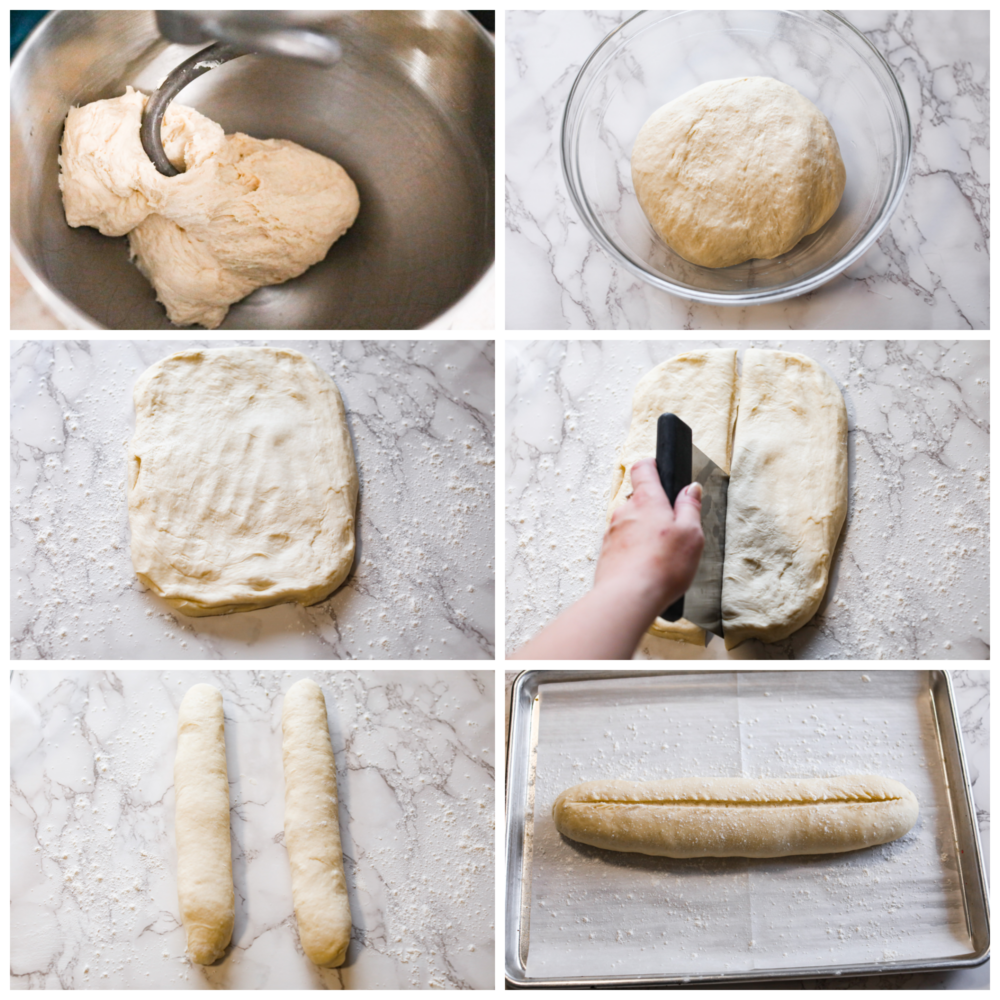
How to Make Cuban Bread
If you have ever made sourdough before, this Cuban bread recipe will be simple! If you are making bread for the first time, this will also be easy for you as long as you follow each step. Make sure you give yourself enough time to make the dough the night before and let it rest in the fridge overnight.
Overnight Starter
- Whisk and Refrigerate: In a small bowl, whisk together water, bread flour, and active dry yeast until well combined. Cover with plastic wrap and leave in the fridge overnight, or at least 8 hours.
Make Cuban Bread
- Mix: In a stand mixer fitted with the dough hook, add your package of active dry yeast, honey, and water. Mix and let sit for about 5 minutes to activate the yeast.
- Melt: Melt your lard in the microwave, until just melted. Don’t let the lard get too hot!
- Make Dough: To the bowl of the stand mixer, add your melted lard, salt, 2 cups of bread flour and all your overnight starter. Mix on medium low speed until all ingredients are properly incorporated and the dough has come together.
- Add Flour: At this point you may want to add more flour, only add in ¼ cup increments. The dough shouldn’t be too wet, it should pull away from the sides of the mixer when fully incorporated.
- Knead: Increase mixer speed to medium high and allow it to mix for 3-5 minutes, this will knead the dough and strengthen the gluten.
- Rest: Once the dough has finished mixing, place the dough into a bowl oiled with vegetable oil, cover and let rest until it has doubled in size. About an hour.
- Prep: Prepare two baking sheets with parchment paper and a dusting of flour, set aside.
Shape and Bake
- Divide: Take the proved dough and place on a floured surface, shaping into a large rectangle. Cut the rectangle in half lengthwise so you have 2 rectangles. Tightly roll each rectangle into cylinders with slightly tapered ends and place both on the floured parchment lined sheet pans.
- Preheat: Preheat oven to 400℉
- Proof: Cover and allow the loaves to proof until just before double in size, about 30-45 minutes. Perform a poke test by lightly poking each loaf about 10 times along the length of the loaf, your pokes should slightly remain but spring back, if they spring back and you can no longer see the pokes you need to let them sit for a bit longer.
- Bake: When the loaves are ready, lightly dust with flour and make one cut with a sharp knife on top of each loaf that runs the length of the loaf. Bake for 20-25 minutes, with one pan on the top rack and one on the bottom rack. Halfway through the bake switch the positions of the pans to ensure an even bake. Loaves should be evenly golden brown.
- Cool: Allow the loaves to cool completely before cutting.

Tips and Substitutions
This Cuban bread is a delight to make! It’s so fun and easy, and a tasty bread. Here are some tips to make the most out of this Cuban bread recipe.
- Proofing Your Dough: Your dough may proof slowly or quickly depending on the temperature of the room you are keeping it in.
- Tip for Overproofing: If you over-proof your loaves you can reform them into tight loaves and try proofing them again, but you can only do this once before the dough needs to be remade.
- Lard Substitution: Traditionally this bread is made with lard, but you can substitute with Crisco if you’d like.
- Making Bread Without a Mixer: If you prefer to make bread by hand, simply follow the same instructions, but instead of using a stand mixer, you will use a wooden spoon and a large mixing bowl. When it comes to the kneading portion, you will remove the dough from the bowl and knead the dough on a clean countertop.
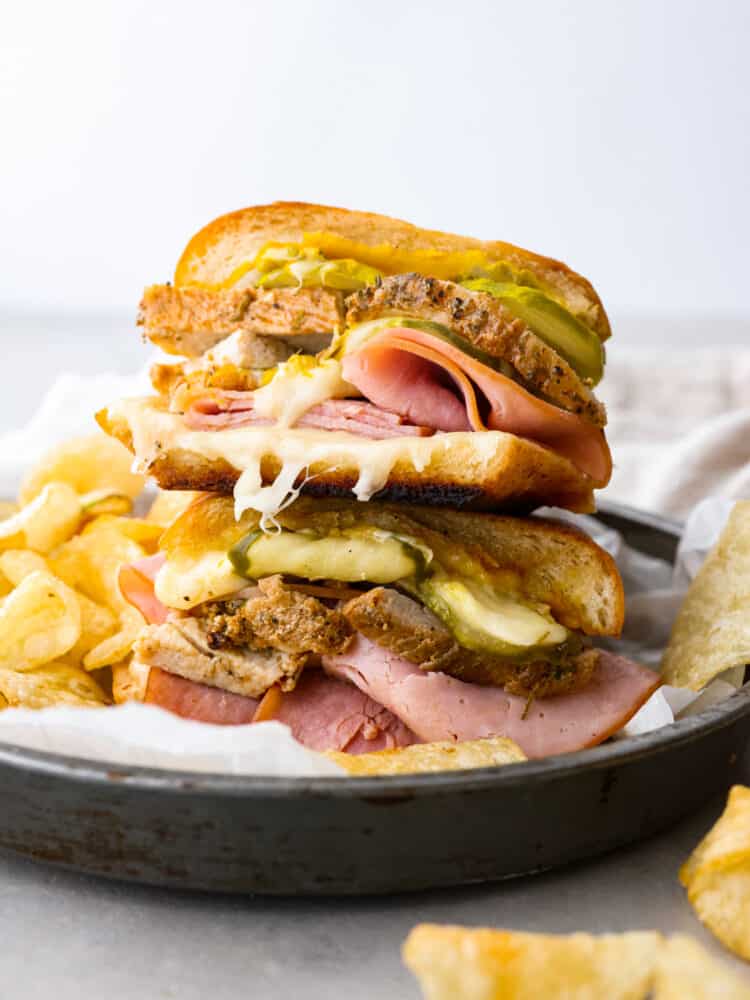
Storing Leftovers
Bread, as you know makes great leftovers! This Cuban bread is no exception. There are lots of ways to store bread depending on the type of loaf you make. Here are my tips for storing this bread.
- On the Counter: Store your leftover Cuban bread in a bread box, a linen bread bag, or in a plastic bag or airtight container on the counter for up to a week. The longer it sits out the drier it will become, so it’s best to eat it within the first couple of days.
- In the Freezer: In an airtight container or plastic bag, store your bread in the freezer for up to 4 months.
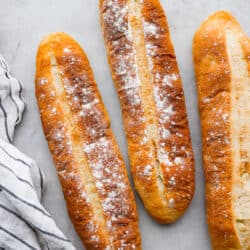
Cuban Bread
Ingredients
Overnight Starter:
- ½ cup water
- ½ cup bread flour
- ½ teaspoon dry active yeast
Bread:
- 1 package active dry yeast 2 ½ teaspoons
- 1 tablespoon honey
- ½ cup warm water
- ¼ cup lard
- 2 teaspoons salt
- 2-3 cups bread flour
Instructions
Overnight starter:
-
In a small bowl, whisk together water, bread flour, and active dry yeast until well combined. Cover with plastic wrap and leave in the fridge overnight, or at least 8 hours.
Bread:
-
In a stand mixer fitted with the dough hook, add your package of active dry yeast, honey, and water. Mix and let sit for about 5 minutes to activate the yeast.
-
Melt your lard in the microwave, until just melted. Don’t let the lard get too hot!
-
To the bowl of the stand mixer, add your melted lard, salt, 2 cups of bread flour and all your overnight starter. Mix on medium low speed until all ingredients are properly incorporated and the dough has come together.
-
At this point you may want to add more flour, only add in ¼ cup increments. The dough shouldn’t be too wet, it should pull away from the sides of the mixer when fully incorporated.
-
Increase mixer speed to medium high and allow it to mix for 3-5 minutes, this will knead the dough and strengthen the gluten.
-
Once the dough has finished mixing, place the dough into a bowl oiled with vegetable oil, cover and let rest until it has doubled in size. About an hour.
-
Prepare two baking sheets with parchment paper and a dusting of flour, set aside.
-
Take the proved dough and place on a floured surface, shaping into a large rectangle. Cut the rectangle in half lengthwise so you have 2 rectangles. Tightly roll each rectangle into cylinders with slightly tapered ends and place both on the floured parchment lined sheet pans.
-
Preheat oven to 400℉
-
Cover and allow the loaves to proof until just before double in size, about 30-45 minutes. Perform a poke test by lightly poking each loaf about 10 times along the length of the loaf, your pokes should slightly remain but spring back, if they spring back and you can no longer see the pokes you need to let them sit for a bit longer.
-
When the loaves are ready, lightly dust with flour and make one cut on top of each loaf that runs the length of the loaf. Bake for 20-25 minutes, with one pan on the top rack and one on the bottom rack. Halfway through the bake switch the positions of the pans to ensure an even bake. Loaves should be evenly golden brown.
-
Allow the loaves to cool completely before cutting.
Nutrition
from The Recipe Critic https://ift.tt/h6PrECe
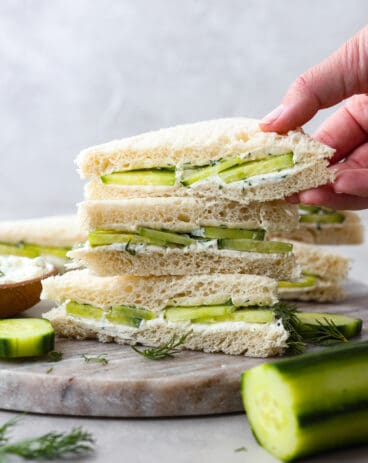

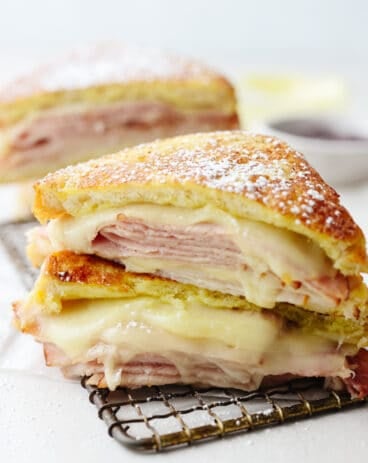
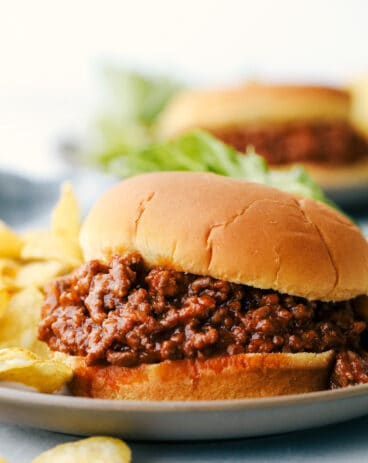
No comments:
Post a Comment